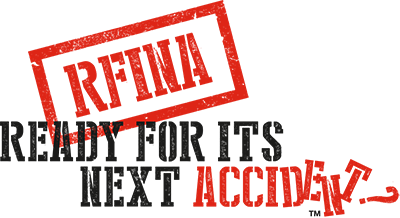Two hoods ready to paint, one new, one original from the car. If there was a third used OEM hood it would look a lot like these two
I have written in the past about the tension between vehicle manufacturers and the other participants in the collision repair industry. In March of 2017 I criticized the OEMs for their insistence on new OEM parts for all repairs. http://rfina.ca/2017/03/06/information-needed-get-past-no/
 Since that time, they seem to have doubled down on the policy with All New OEM Parts on All Repairs. The next revision may be all caps and underlined. Meanwhile the repair side of the industry and the paying end users, whether insurance companies or vehicle owners continue to use many used parts.
Since that time, they seem to have doubled down on the policy with All New OEM Parts on All Repairs. The next revision may be all caps and underlined. Meanwhile the repair side of the industry and the paying end users, whether insurance companies or vehicle owners continue to use many used parts.
A hood with a small dent at the front edge may be removed to facilitate the repair and paint process as it is more efficient than dealing with the entire vehicle through the repair process including masking, baking and cleaning. If that repainted hood is re-installed (paying attention to the possibility of one time use parts such as washer nozzles or mounting bolts) the entire repair process has been done in an OEM approved manner. A hood has been removed, inspected, repaired, repainted and installed.
If the damage is something that cannot be repaired the correct OEM repair would be to buy a new hood for perhaps $900. However, if a used hood from the same year vehicle were available this could be bought for $450 or 500. The work required to ready either the new or used part for installation would be very similar, with perhaps an additional 15 minutes to clean the used part. The used part would have a thicker film build that the new part, but if this film build is within spec that is not a deficiency in the overall quality. Also, the paint thickness would be exactly the same as on the repaired, ‘approved’ original hood.
As a business owner with 30 years’ experience I would not be able to offer my customer any good reason why they should pay $400 or $500 more for the new hood. If I was to say that the manufacturer insists on new parts the next question would be why and my only answer would be ‘because they said so.’
If the replaced part is a welded panel I have no difficulty using the new part and defending the use of that part with a valid technical explanation of why it is needed.
There are many, with an upper case M, cases where OEM procedures are truly critical in the safe repair of a vehicle and OEMs are right in keeping the pressure on to insist that these procedures be followed. Unfortunately, by mixing non-essential requirements in with the truly important ones they are inviting interpretation of all of their policies.

